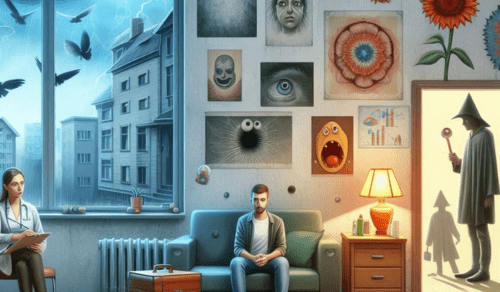Phobias can be overwhelming. They affect daily life, causing stress and fear. Behavioral therapy offers hope. This approach changes how people react to their fears. It has helped many, including those with severe cases. An example is Davie autism spectrum disorder. For them, behavioral therapy can be a turning point. It provides tools to face fears and regain control. Understanding this therapy’s impact is key. It shows how structured change can lead to freedom.
What is Behavioral Therapy?
Behavioral therapy focuses on changing unhealthy behaviors. It uses techniques like exposure therapy and cognitive restructuring. This method helps individuals confront and change their responses to fears. By gradually facing their fears, people can reduce their phobic reactions.
Types of Behavioral Therapy
- Exposure Therapy: This involves facing the fear in a controlled way. It can start with imagining the fear and then gradually move to real-life exposure.
- Cognitive Behavioral Therapy (CBT): CBT combines exposure with cognitive restructuring. It helps change negative thought patterns about fear.
- Dialectical Behavior Therapy (DBT): DBT teaches skills like emotional regulation and mindfulness to help manage phobic reactions.
Effectiveness of Behavioral Therapy
Studies show that behavioral therapy can be highly effective in treating phobias. According to the National Institute of Mental Health, exposure therapy is particularly effective for specific phobias. It helps individuals gradually face their fears, reducing anxiety over time.
Comparison of Behavioral Therapy Methods
| Method | Focus | Effectiveness |
| Exposure Therapy | Gradual exposure to fear | High for specific phobias |
| CBT | Changing negative thoughts | Wide range of phobias |
| DBT | Emotional regulation | Effective for complex cases |
Why Choose Behavioral Therapy?
Behavioral therapy provides structure and clear goals. It focuses on measurable changes. Many choose it for its evidence-based nature. Techniques like exposure therapy are backed by research. People can see clear progress as they manage their fears.
Case Study: Overcoming a Fear of Flying
A case study shows the impact of exposure therapy. An individual with a fear of flying started by imagining boarding a plane. Gradually, they progressed to visiting an airport and finally taking a short flight. This structured approach helped them overcome their fear. It is a testament to the effectiveness of behavioral therapy.
Conclusion
Behavioral therapy offers a powerful way to treat phobias. It empowers individuals to face and overcome their fears. With structured techniques, people can regain control over their lives. For those struggling with phobias, behavioral therapy opens the door to a more peaceful, fearless life. As the Anxiety and Depression Association of America notes, seeking professional help is the first step toward recovery.




